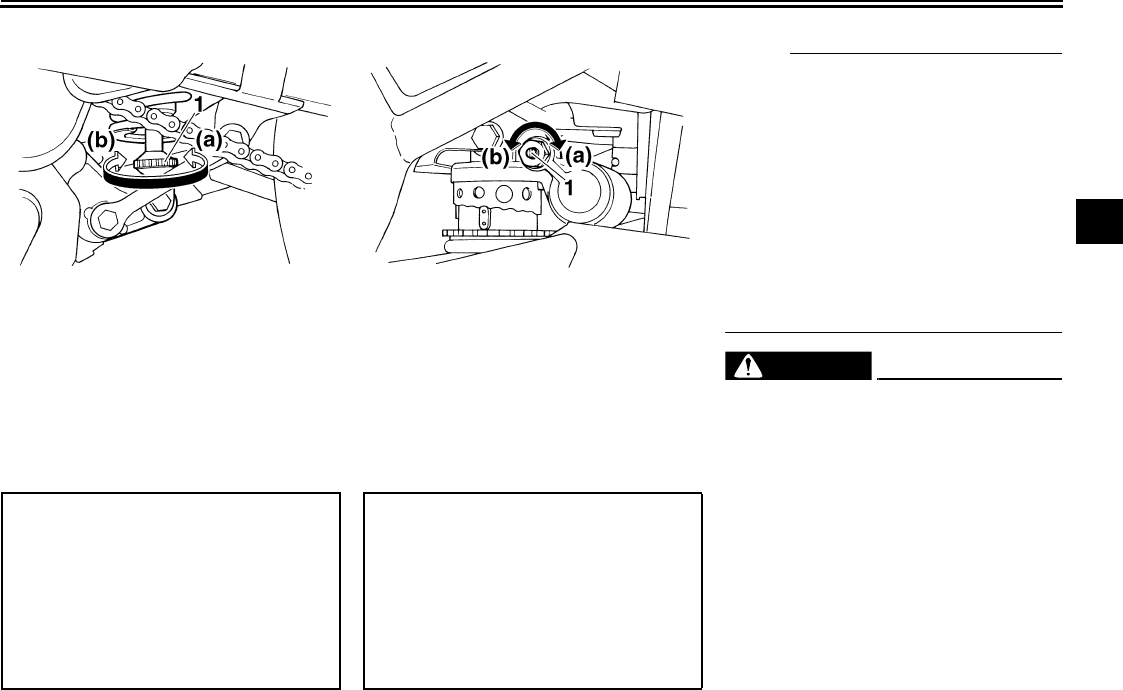
INSTRUMENT AND CONTROL FUNCTIONS
3-14
3
Rebound damping force
To increase the rebound damping force
and thereby harden the rebound damp-
ing, turn the adjusting knob in direction
(a). To decrease the rebound damping
force and thereby soften the rebound
damping, turn the adjusting knob in di-
rection (b).
Compression damping force
To increase the compression damping
force and thereby harden the compres-
sion damping, turn the adjusting screw
in direction (a). To decrease the com-
pression damping force and thereby
soften the compression damping, turn
the adjusting screw in direction (b).
NOTE:
Although the total number of clicks of a
damping force adjusting mechanism
may not exactly match the above spec-
ifications due to small differences in
production, the actual number of clicks
always represents the entire adjusting
range. To obtain a precise adjustment,
it would be advisable to check the num-
ber of clicks of each damping force ad-
justing mechanism and to modify the
specifications as necessary.
WARNING
EWA10220
This shock absorber contains highly
pressurized nitrogen gas. For prop-
er handling, read and understand
the following information before
handling the shock absorber. The
manufacturer cannot be held re-
sponsible for property damage or
personal injury that may result from
improper handling.
● Do not tamper with or attempt to
open the gas cylinder.
1. Rebound damping force adjusting knob
Rebound damping setting:
Minimum (soft):
20 click(s) in direction (b)*
Standard:
10 click(s) in direction (b)*
Maximum (hard):
3 click(s) in direction (b)*
* With the adjusting knob fully turned
in direction (a)
1. Compression damping force adjusting screw
Compression damping setting:
Minimum (soft):
1 click(s) in direction (a)*
Standard:
7 click(s) in direction (a)*
Maximum (hard):
12 click(s) in direction (a)*
* With the adjusting screw fully turned
in direction (b)
U1C210E0.book Page 14 Tuesday, September 21, 2004 1:28 PM


















